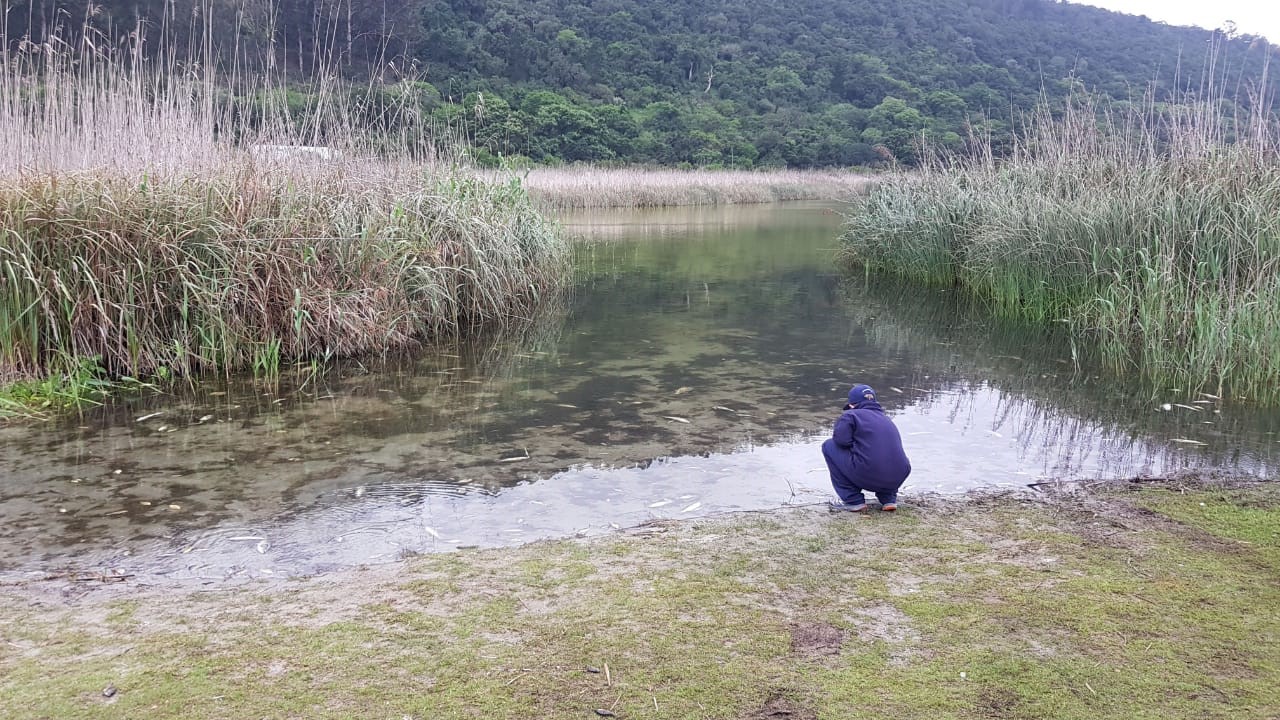SEDGEFIELD NEWS - A fish die-off occurred at Groenvlei, Sedgefield recently, and there are indications that the growing numbers of carp may be a participating factor.
Fish started dying on Saturday 6 October in small numbers followed by a bigger fish die-off between 8 to 10 October, when substantial numbers of largemouth bass, bluegill sunfish and indigenous fishes died.
CapeNature fish scientist Dean Impson and Dr Kevin Christison, a specialist fish disease scientist of the Department of Agriculture Forestry and Fisheries (DAFF), visited Groenvlei to assess the extent of the fish die-off and attempt to understand why this incident is taking place.
During this visit, dead and decaying bass and bluegill were seen floating next to reed beds on the edge of Groenvlei, especially on its western shoreline.
There were no fresh dead bass or bluegill, indicating that the major fish die-off had passed.
Carp and tilapia seems to be unaffected by the fish die-off. These are very hardy fishes able to survive poor water quality conditions.
At this stage, there is not an obvious reason for the fish die-off.
According to Dean Impson, fish die-offs are a worldwide phenomenon and are the result of natural and/or man-made factors.
Mortality from natural causes is generally far more common and can be caused by many factors including oxygen depletion, toxic gases and substances, toxic algal blooms, turnover of the water column, sudden or excessive temperature changes, salinity changes, lightning, and diseases and parasites.
Bacterial kills are seldom sudden and there is usually a gradual build-up of fish losses. Death caused by parasites and disease require histological examination by trained biologists or veterinarians.
However, man-made factors can also cause fish die-offs for example the discharging of pesticides, fertilisers and other chemicals into water bodies that may act directly on the fish, or indirectly by, for example, resulting in a sudden decrease in available dissolved oxygen.
Water quality measurements by the Garden Route District Municipality and SANParks at the time of the fish die-off indicated poor water quality (e.g. low dissolved oxygen levels, 3.9 mg/L) and elevated water alkalinity (pH 9.2) in some of the shallow bays on the western shoreline.
The combination of elevated pH and low dissolved oxygen is a known fish stressor. There was also a strong smell of what may have been hydrogen sulphide, a known fish toxicant, which is produced by decaying animal and plant material.
The increasing numbers of carp in Groenvlei are a major cause of concern for CapeNature. CapeNature approved an ongoing control programme of the carp using nets as well as bow-hunters operating under permit from CapeNature that will hopefully substantially reduce their numbers in the long term.
To better understand the impact of carp in the vlei, a post-doctoral study will start in 2019, under the leadership of Dr Olaf Weyl of the South African Institute for Aquatic Biodiversity.
Members of the public are advised not to eat fish from Groenvlei, especially dead fish, until the fish die-off stops and conditions return to normal.
 A fish die-off occurred at Groenvlei, Sedgefield recently, and there are indications that the growing numbers of carp may be a participating factor.
A fish die-off occurred at Groenvlei, Sedgefield recently, and there are indications that the growing numbers of carp may be a participating factor.
'We bring you the latest Garden Route news'
















